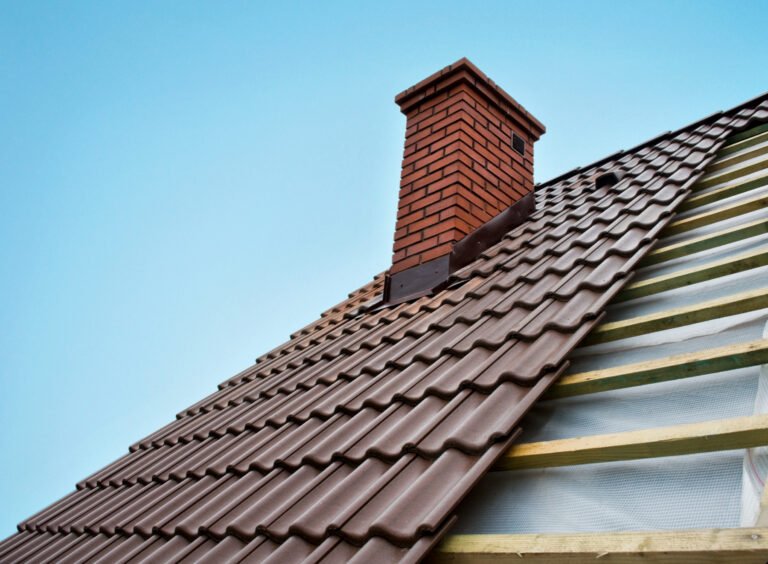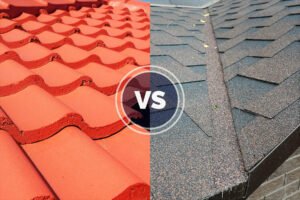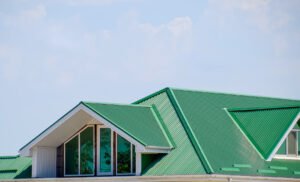Roof shingles are interlocking tiles that cover the roof. So, they aren’t permanent and can slide due to heavy wind or rain. But today, we’ll tell you the minimum roof pitch required to balance each shingle. So you can save your shingles from falling.
Key Takeaways
- A pitch of 2:12 works for most shingles. But, you must use adequate interlocking and overlaps to keep them from sliding.
- You can use asphalt or metal shingles for gently-pitched roofs, but you must add felt for support.
- Wooden, Clay, or Concrete shingles are the best for high-pitched roofs. But installing them requires a lot of nailing and professional help.
- The shingle roof pitch depends on the material, interlocking, finish, and different trusses. But that’s not all! Read on to know the best pitch for different climates and their benefits.
What Is a Roof Pitch & How to Calculate One?
Roof pitch is the vertical rise of the roof for every 1-feet horizontal span. It indicates the steepness or angle of the roof and determines the slope along its sides.
Generally, a 1: 12, i.e., a 1-inch rise for every 12 inches span, is considered low and perfect for roof shingles. But, you can still install shingles for higher slopes like 6:12 or 7:12 with precise metal locks and proper welding.
How to Calculate the Roof Pitch?
- Use a tape meter and measure a distance of 12-inches from the base of the roof at the horizontal run. Mark the point using a pencil or tape.
- Then, take a spirit level and balance its bubble at the center.
- Lastly, measure the distance between the base level and the top of the roof and note the pitch.
For example, if the vertical rise is 5 inches, your slope will be 5:12, that is, a 5-inch rise for every 12-inch horizontal length.
Roof Pitches of Popular Types of Shingles
Roof shingles aren’t universal and vary according to weight and interlocking system. So, different shingles use different pitches for adherence and better stability:
1. What Is the Minimum Roof Pitch for Asphalt Shingles?
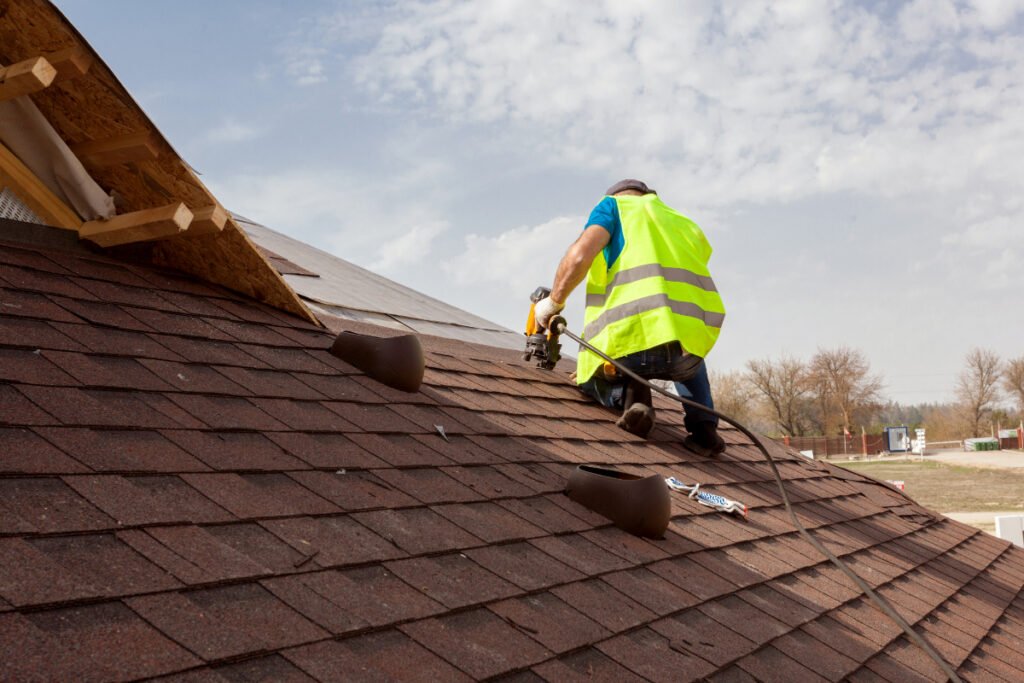
You’ll need a gentle, 3:12, or 4:12 pitch for asphalt shingles as they are lightweight and might slide from steep slopes. You can also use a 2:12 roof pitch with 3-tab asphalt shingles, but you must also add a roof flashing or bitumen layer to prevent water pooling.
You can also use roofing cement and mount the asphalt shingles on flat roofs. In either case, install a wind barrel to withstand the storms or add a vapor barrier to buffer from the snow.
Install the shingles at a pitch prescribed by the manufacturer and use 3/4″ nails for stability.
2. What Is the Minimum Roof Pitch for Wooden Shingles?
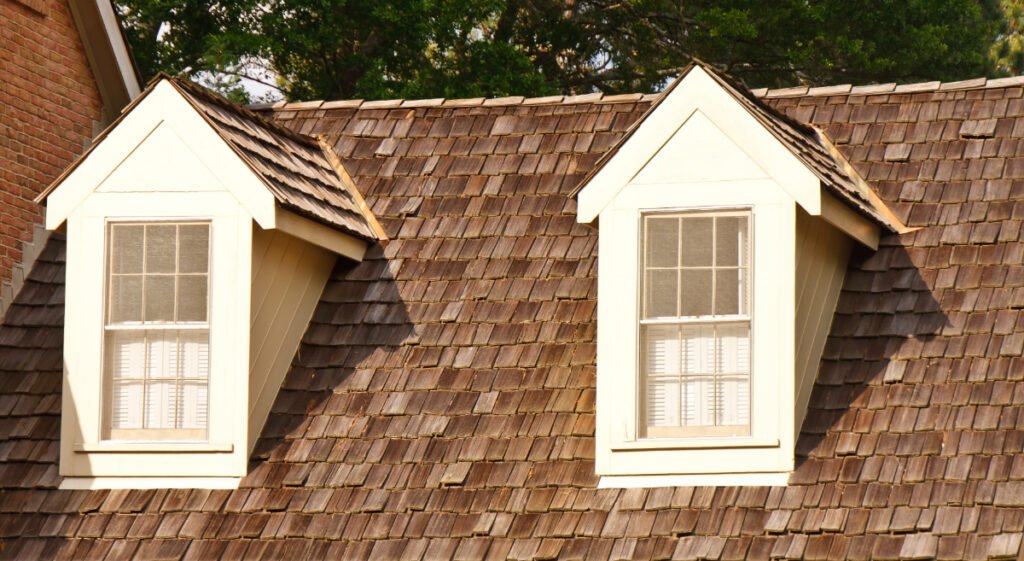
Wooden shingles need a greater 4:12 or 5:12 slope to drain the runoff and reduce hydrostatic pressure. But, you can even nail them to 6:12 or 7:12 slopes with the help of ¾” iron nails or roof screws.
However, you mustn’t mount wooden shingles on flat roofs as they might cause water pooling and leaks. And since they have wider gaps, add felt before placing them on multi-layered roofs.
Leave a 20-35mm overhang at the edges to spread the shingles and balance them on gentle roofs.
3. What Pitch Should You Use for Metal Shingles?
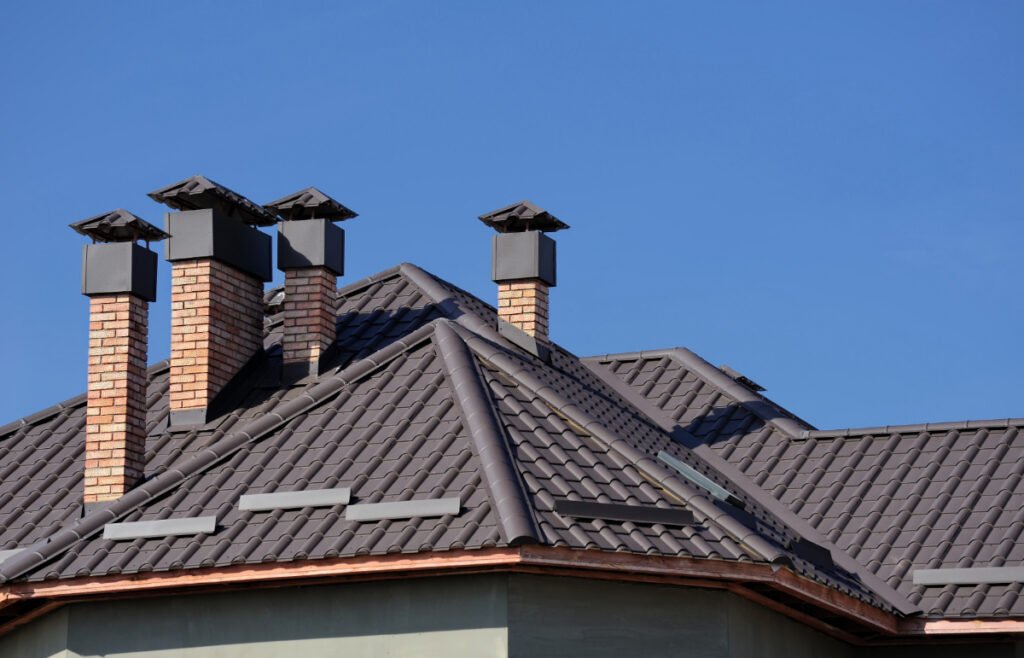
Metal shingles require a 3:12 or 4:12 slope to resist water damage and snow load. But, you can weld galvanized or alloyed metal shingles onto gentle, 1:12, or 2:12 pitches. Later, add a vapor barrier or roofing vent for better weather control.
You can also use lapped aluminum shingles for high-pitched 5:12 roofs or attics. Or, you can lay down a bitumen layer and weld copper shingles onto high-pitched roofs.
Pick grooved shingles to strengthen high-pitched roofs and support their insulation.
4. What Is the Best Roof Pitch for Clay Shingles?
Clay shingles work the best on moderate slopes of 4:12 or 5:12. But you can use two to three layers of bitumen felt or rubber and use them on gentle 2:12 pitches. You can also use flat clay or dimensional shingles for flat or decked roofs.
Use wind clips and silicone sealant to reduce water pooling and breakage on flat pitches.
5. What Is the Minimum Roof Pitch for Concrete Shingles?
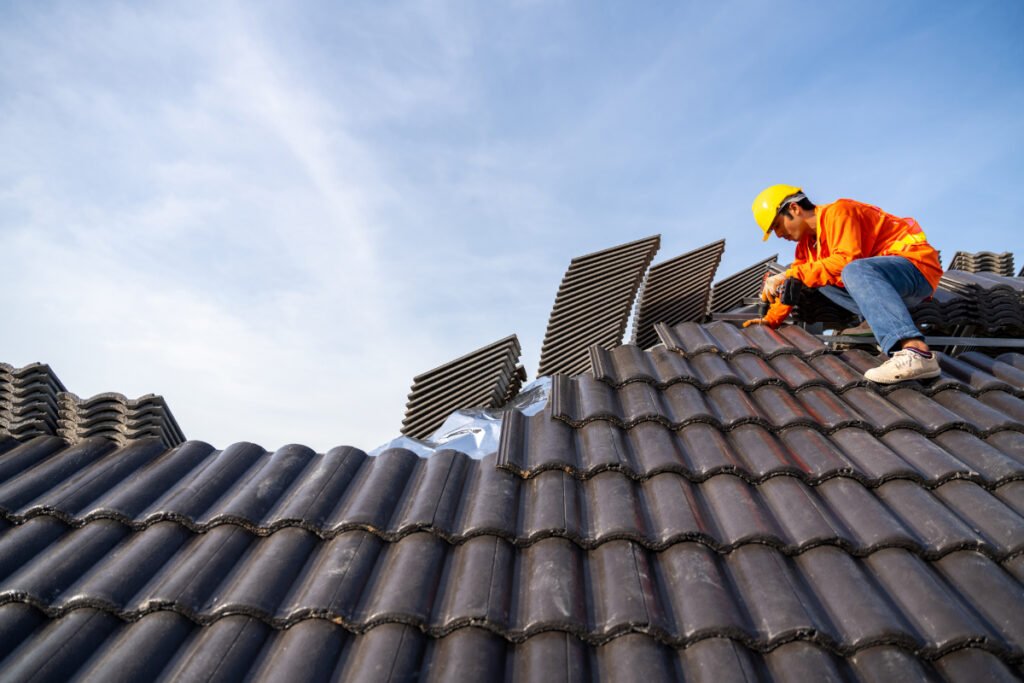
Regular concrete shingles need a 4:12 slope for proper balance and stability. However, with cement and roofing nails, you can use a wavy S-shaped concrete shingle and mount it on a 2.5:12 pitch. Or, you can use single-ply concrete shingles for multi-layer pitches too.
Use hand-made concrete shingles for easy nailing on low-pitched roofs. But, you must use rugged or corrugated shingles to drain water on high-pitched roofs.
6. What Is the Best Roof Pitch for Slate Shingles?
Slate shingles work the best on high-pitched 5:12 or 6:12 roofs. You can add more fasteners and install them on multi-layer roofs, but you must have a roof gutter to control rain. Or, you can use faux stone shingles and mount them on flat roofs too!
Use an 85mm headlap and add fiber cement fillers to secure the shingles on gently sloped roofs.
A List of the Shingles for Different Roof Pitches
Shingles for Gently Pitched Roofs ( 2:12 or 3:12 ):
- Asphalt and 3-tab Shingles
- Galvanized or Alloyed Metal Shingles
- S-shaped Concrete Shingles
Shingles for High Pitched Roofs ( 4:12 & Above ):
- Wooden Shingles
- Corrugated Metal Shingles
- Aluminum Shingles
- Clay Shingles
- Concrete Shingles
- Slate Shingles
Minimum Roof Pitch Based on the Seasons and Climate
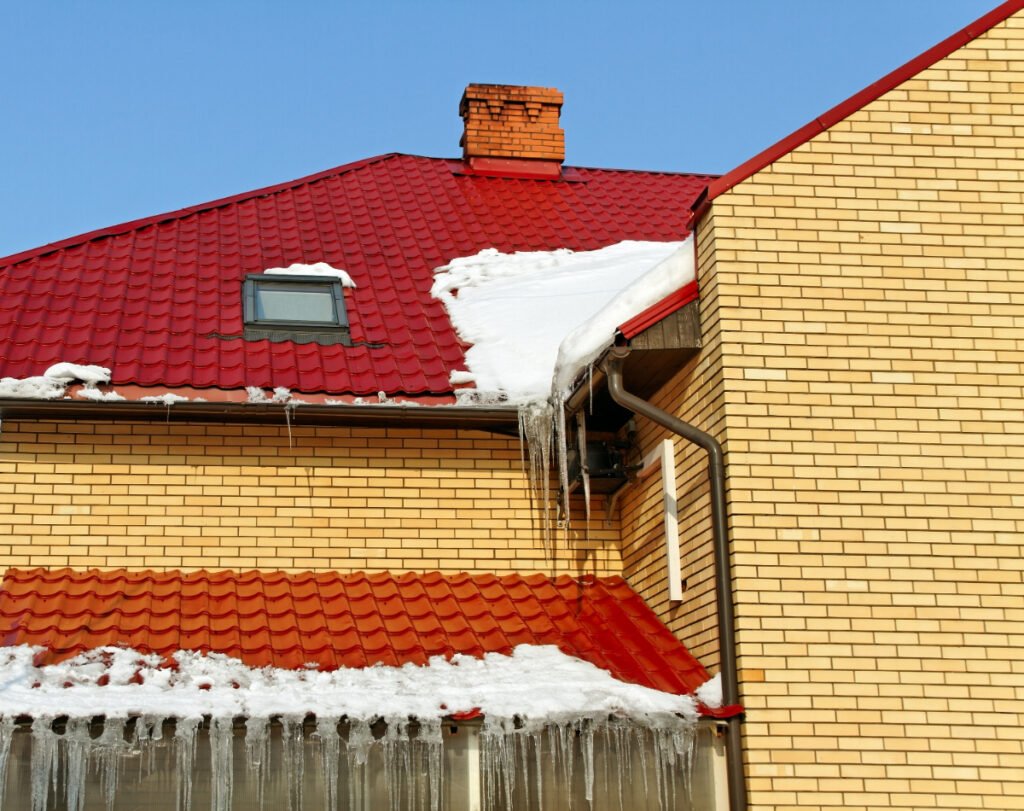
1. What Is the Best Shingle Pitch in Snowy Areas?
Snowy areas must have a greater 9:12, 7:12, or 6:12 shingle pitch to drain the snow and save the shingles from buckling. And you must also add some insulation to melt the snow and strengthen the shingles.
So, you can use sturdier slate, clay, wood, or concrete shingles for better snow-load handling and strength.
2. What Is the Best Shingle Pitch in Rainy Areas?
Rainy areas can work with moderately sloped, 4:12, or 3:12 shingle roofs. But, they must have adequate roof flashing and gutters for faster drainage.
Similarly, you’ll need to use interlocking shingles with minimum gaps to prevent leaks. So, you can use aluminum, corrugated metal, clay, or slate shingles for such roofs.
3. What Is the Best Shingle Pitch for Dry Regions?
Dry regions must use a minimum of 2:12 or 3:12 shingle roof pitches to reduce sun exposure and maintain airflow. But, they must have wider asphalt or concrete shingles to bear the weight of the roof vents and drain the exhaust quickly.
Benefits of Using the Right Pitch for Shingled Roofs
The right pitch will not only strengthen your shingles but add a better roof shape and improve its weather resistance. It has some other benefits as listed below:
- Improves the roof strength and saves it from buckling
- Speeds up the roof drainage and eliminates fungus
- Reduces the shingle gaps and keeps pests away
- Improves the wind and rain resistance
- Saves the shingles from sliding and falling
Tips for Mounting the Right Shingle Roof Pitch
- Use a minimum slope of 2:12 for shingles and add different gutters and flashing systems to drain the runoff.
- Mount a slope of 3:12 for shingle roofs with a curvilinear or dormer edge.
- Pick a pitch of 4:12 for squarish, hipped shingle roofs, shed roofs, and gable roofs.
- Use gentle pitches for heavy-weight metal or concrete tiles, but pick lightweight shingles for heavy pitches.
- Add additional fasteners, bracings, and screws to support pitches greater than 9:12.
Can You Use Shingles on a 3:12 Roof Pitch?
You can use asphalt or S-shaped concrete shingles for a 3:12 pitch, but you must use roofing cement or felt to secure its base to the roof joists.
Can a Roof Be Too Flat for Shingles?
Yes, you cannot mount shingles on roof pitches lower than 2:12 as they might cause water pooling and leaks with time. Plus, such pitches widen the gaps between the shingles and disrupt the attic ventilation considerably.
Which Shingles Are the Best for Flat Roofs?
Asphalt, Metal, and Concrete shingles are the best for flat roofs. But, you must use roofing felt and realign the pitch to 2.5:12 for better stability and weather control.
Can You Shingle a 9:12 Roof Pitch?
Yes, you can shingle a 9:12 roof with Corrugated metal, Clay, Aluminum, and Wood shingles. But, you should use additional bracing and sealants to support them better.
Knowing the minimum roof pitch is essential to save the shingles from sliding in storms. Similarly, the roof pitch balances the shingles, reduces gaps, and saves them from leaking. So, you can use the right roof pitch that suits the climate and shingle material.
But haven’t you finalized the shingle material yet? Then, jump onto our guide on ‘different types of roofing shingles’ to know the pros, cons, and characteristics of each.

